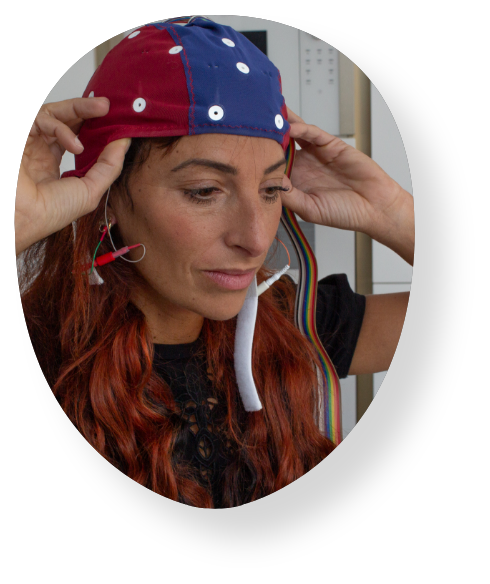This method is prescriptive; the protocols are pre-designed to be the most common solution for any given complaint.
The upside is that it takes almost no training to do. The downside is that is may not be the area of concern; obviously, it’s better to check and see if that is the actual problem area or not.
For example; a client walks into your office to improve his concentration. On a brain level, there can be many different reasons for the symptom of ‘poor concentration’. Perhaps it’s just dreamy distraction, perhaps it’s injury, perhaps anxiety to a level that few brain resources are left to focus with.
If you don’t look at the brain activity you won’t know which, hence symptom based protocols are not the best way to go.
Outside of a few pre-packaged systems and clinical studies (where standardisation is a requirement), symptom based protocol selection is rarely used.
A mini-Q is a way to get an idea of overall brain activity by moving one or two sensors from spot to spot on the scalp, and taking recordings from each. You compile this data into a map, which you use to design protocols to suit the client’s individual brain patterns.
The upside of mini-Q’s is that it only takes a one or 2 sensor system to do, making it quite inexpensive. The downside is that it gives you is only a fraction the information of a QEEG (below).
Some pre-packaged systems have automated this method, using software to build the maps and algorithms to suggest what training to deliver. While this kind of software assistance is helpful, it’s no substitute for the eye of a skilled neurofeedback therapist. Computers can’t make intuitive judgments, humans can.
Learning how to interpret your own brain maps has many benefits, and there is no better way to learn it than by using mini-Q’s. It generally takes six months to a year to get au-fait with them.
A QEEG is a quantitative measure (or ‘Q’) of the EEG data.
The measure that the ‘Q’ uses is called a Z-score. When you go to get your thyroid checked, they compare your hormone levels against a norm. This normative level is a Z-score.
If your client has a particular problem to solve, Z-scores are a great way to pinpoint the issue and precisely target only the problem areas. A QEEG will tell you what is happening, where it;s happening, and information on a whole range of factors.
A QEEG gives you enough information to design a fully comprehensive protocol that specifically suits the goals your client. It is also a substantially higher investment, requiring full 19 sensor equipment and professional training.
As a substitute for the training, many clinicians simply send the QEEG information to a lab, who design the protocols for them. The downside of having your training protocols designed by someone else is that it effectively makes you into a technician, rather than a therapist in your own right.
It’s a huge advantage if you can collect, process, and interpret your own brain maps.
Just to complicate things a little more, there are a few different approaches to brain mapping.







